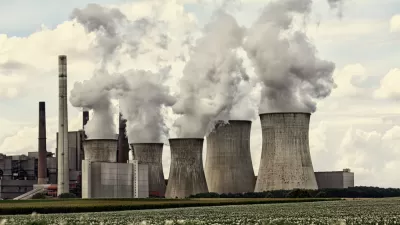Coal plants will retire faster than analysts had figured under the Clean Power Plan, which the Trump administration is repealing, yet the Department of Energy proposes to make building new coal plants a centerpiece of its energy policy.
"More coal plants are now projected to retire more quickly than experts thought a year ago, according to energy-industry analysts who gathered in Chicago on May 8 at the American Wind Energy Association’s Windpower 2018 conference," reports Jeff McMahon, who writes about green technology, energy, environment for Forbes. "Three alternative energy sources—wind, solar and natural gas—are expected to divide up the spoils, they said."
“The real story I believe is in coal retirements,” said Bruce Hamilton, a director in the energy practice at Navigant [a Chicago-based global management consulting company]... "That’s more than twice what we projected last year at this time. It’s more than we had two years ago when the Clean Power Plan was in the assumptions.
"[T]he fundamentals of the economics of coal have gotten worse, with costs going up, while the competition for coal—that is, gas, wind and solar—has all gotten cheaper."
From a climate perspective, the retirement of coal plants is significant because they release almost twice the amount of carbon dioxide than natural gas when burned.
"Concurrent with the boom in coming years of wind and solar, there’s also a boom in natural-gas generation And all three of those technologies—wind, solar and gas—are gaining market share at roughly the same speed in the 2020s,” said Max Cohen, an IHS Markit analyst.
”A little bit of that is due to power-demand growth in some regions, such as ERCOT (Texas), but mostly this boom in gas is coming at the expense of coal.”
Trump wants more coal plants built while existing ones retire
Amidst higher than expected coal power plant retirements, the Trump administration is taking action to develop a new, more modern type of coal plant with taxpayer subsidies, reports Alexander Nazaryan for Yahoo News on May 12.
Released earlier this week, the request for information from the U.S. Department of Energy's [DOE] Office of Fossil Energy — the first step in a process that could eventually see projects funded with taxpayer dollars — seeks “input on the development of small-scale, modular coal-based power plants of the future.” These smaller, modern plants would have to feature “operational flexibility, high efficiency, and low emissions.”
In keeping with the precepts of “modular” design, which has become popular in commercial and residential construction, the plan calls for “high-quality, low-cost shop fabrication” and “simplified maintenance features,” among other features.
Nazaryan contacted environmentalists and energy experts for comment on the DOE proposal but found only scorn. He also looked into the efficiency aspect of the proposal, noting that is an oxymoron, a bit like "clean coal," a term which indicates that carbon emissions are captured and stored, which will not be the case for these plants.
On average, American coal plants are only 37.4 percent efficient, meaning that nearly two-thirds of the coal burned is not converted to electricity.
Taxpayer funding would be announced in DOE's next step, a request for proposals. "But the mere announcement of the initiative suggests that Energy Secretary Rick Perry, the former governor of Texas, takes seriously President Trump’s promise to make coal the centerpiece of his energy policy," adds Nazaryan.
Hat tip to Sierra Club Beyond Dirty Fuels Initiative.
FULL STORY: Coal Collapsing Faster Under Trump; Wind, Solar, Gas All Benefit

Alabama: Trump Terminates Settlements for Black Communities Harmed By Raw Sewage
Trump deemed the landmark civil rights agreement “illegal DEI and environmental justice policy.”

Planetizen Federal Action Tracker
A weekly monitor of how Trump’s orders and actions are impacting planners and planning in America.

The 120 Year Old Tiny Home Villages That Sheltered San Francisco’s Earthquake Refugees
More than a century ago, San Francisco mobilized to house thousands of residents displaced by the 1906 earthquake. Could their strategy offer a model for the present?

Opinion: California’s SB 79 Would Improve Housing Affordability and Transit Access
A proposed bill would legalize transit-oriented development statewide.

Record Temperatures Prompt Push for Environmental Justice Bills
Nevada legislators are proposing laws that would mandate heat mitigation measures to protect residents from the impacts of extreme heat.

Downtown Pittsburgh Set to Gain 1,300 New Housing Units
Pittsburgh’s office buildings, many of which date back to the early 20th century, are prime candidates for conversion to housing.
Urban Design for Planners 1: Software Tools
This six-course series explores essential urban design concepts using open source software and equips planners with the tools they need to participate fully in the urban design process.
Planning for Universal Design
Learn the tools for implementing Universal Design in planning regulations.
Clanton & Associates, Inc.
Jessamine County Fiscal Court
Institute for Housing and Urban Development Studies (IHS)
City of Grandview
Harvard GSD Executive Education
Toledo-Lucas County Plan Commissions
Salt Lake City
NYU Wagner Graduate School of Public Service




























